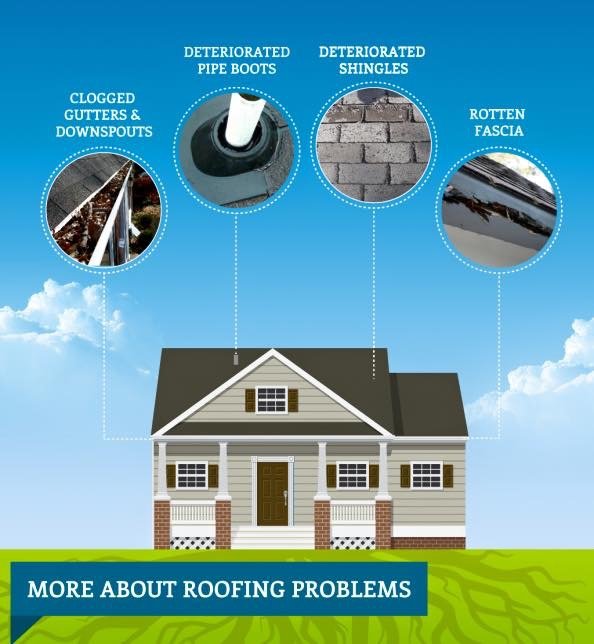Frequent Mistakes In Roofing System Setup And Approaches For Prevention
Frequent Mistakes In Roofing System Setup And Approaches For Prevention
Blog Article
Content By-Allen Snow
When you're intending a roofing installation, it's very easy to forget crucial information that can cause considerable problems down the line. You may be attracted to cut edges on product selection or skip proper flashing installation, yet these typical errors can cause pricey repair services later on. Understanding the importance of air flow and adhering to regional building regulations is important for an effective task. So, what are the vital steps you should take to ensure your roof stands the test of time? Allow's check out some reliable approaches to stay clear of these pitfalls.
Poor Product Option
When it comes to roofing installment, choosing the wrong materials can lead to pricey troubles down the line. You might think that any roof covering material will certainly do, however that's a common misconception. It's crucial to select materials that match your regional environment and the certain requirements of your home.
For example, if you live in a location with heavy rainfall or snow, going with asphalt tiles might not be the very best selection. Rather, consider more long lasting choices like metal or slate.
Additionally, take notice of the top quality of the materials you're thinking about. Inexpensive materials may save you cash upfront, however they typically lack longevity and can lead to frequent fixings or replacements.
You should also consider the design of your home and guarantee the materials you select will keep its visual allure.
Ultimately, do not neglect to consult with website . They can give valuable insights and advise materials that follow local building codes.
Spending time in proper material option currently can aid you prevent headaches and expenses in the future, making your roof project a success.
Inadequate Flashing Installation
Selecting the appropriate materials isn't the only aspect that can bring about roof covering problems; poor blinking setup can also produce substantial issues. Flashing is critical for routing water far from susceptible locations, such as chimneys, skylights, and roof covering valleys. If it's not installed properly, you take the chance of water intrusion, which can result in mold and mildew development and structural damages.
When you set up flashing, guarantee it's the best kind for your roofing system's design and the neighborhood climate. For instance, metal flashing is often much more long lasting than plastic in locations with hefty rainfall or snow. Make certain the blinking overlaps appropriately and is safeguarded snugly to stop gaps where water can leak through.
You should also take notice of the setup angle. Blinking ought to be placed to route water away from your house, not towards it.
If you're unclear about the setup procedure or the materials needed, speak with a specialist. They can help determine the most effective blinking alternatives and make certain whatever is installed correctly, guarding your home from prospective water damage.
Taking these actions can conserve you time, money, and frustrations later on.
Neglecting Ventilation Needs
While several property owners concentrate on the aesthetic and structural facets of roofing installation, disregarding ventilation needs can lead to severe long-lasting consequences. Correct ventilation is vital for managing temperature and dampness degrees in your attic, avoiding concerns like mold and mildew development, wood rot, and ice dams. If you do not set up sufficient ventilation, you're setting your roof up for failing.
To avoid this error, first, assess your home's particular air flow demands. A well balanced system usually consists of both consumption and exhaust vents to promote airflow. Ensure you've installed soffit vents along the eaves and ridge vents at the optimal of your roof. This mix permits hot air to leave while cooler air goes into, keeping your attic area comfy.
Also, think about https://www.dallasnews.com/news/watchdog/2019/06/10/roof-damaged-in-the-storm-here-are-watchdog-s-tips-to-hire-an-honest-roofer/ of roof covering material you've picked. Some products may call for additional ventilation methods. Verify your local building regulations for air flow standards, as they can vary dramatically.
Finally, do not neglect to examine your ventilation system consistently. Blockages from debris or insulation can hinder air flow, so maintain those vents clear.
Final thought
Finally, staying clear of usual roofing installation errors is key to ensuring your roof covering's long life and performance. By selecting the right products for your environment, mounting flashing appropriately, and resolving ventilation requirements, you can stop expensive concerns in the future. Do not neglect to acquaint yourself with regional building regulations and timetable regular inspections. With these steps, you'll enjoy a risk-free, resilient roof that shields your home for years ahead. Satisfied roofing!
